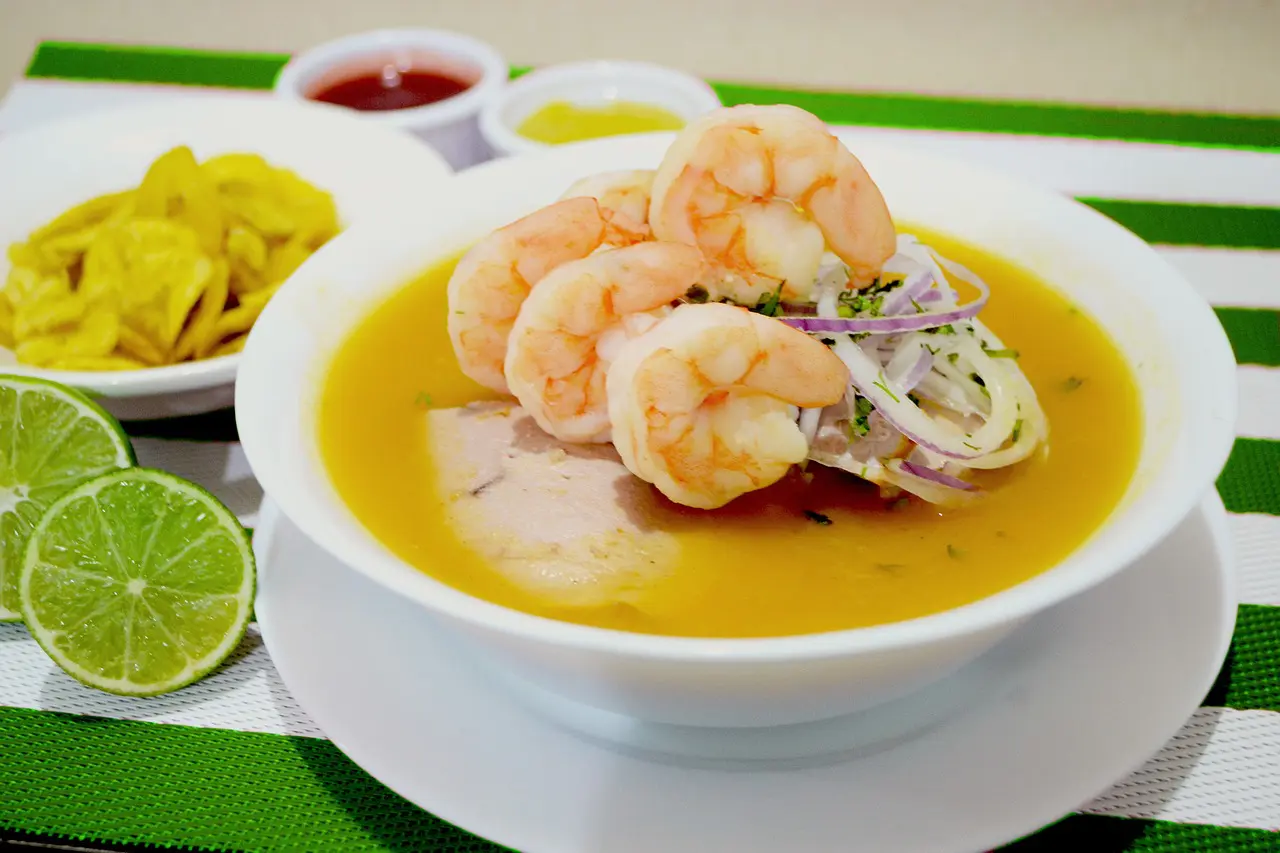Ecuador is a country on South America’s west coast, bordered by Colombia in the north and Peru to the east and south. It is one of thirteen countries which straddles the equator, with most of the country residing in the Southern Hemisphere. Home to active volcanos, the Andes Mountains, the Amazon rainforest and the wildlife-rich Galápagos Islands Ecuador has one of the most diverse landscapes in the world.
Rooted in indigenous traditions and Spanish colonial influences, the majority of Ecuador’s population is recognized as mestizo – a multiracial group of mixed Amerindian (indigenous peoples) and European ancestry.
Table of Contents
Most Popular Ecuadorian Dishes
Ecuador’s natural diversity can be seen in the country’s cuisine. Each of its four regions: Sierra (Andean highlands), Oriente (Amazon), and Costa (the western coast) makes use of unique local ingredients and culinary traditions, creating a vibrant cuisine that is as varied as its terrain and cultural history.
Savoury soups feature heavily on the menu and plantains – fried, barbecued and stuffed – make an appearance throughout the country.
Rich in tropical fruits, with a vibrant street-food culture, Ecuador’s culinary scene also boasts an abundance of fresh fish from its impressive 2,237 km Pacific coastline.
Fried Plantains
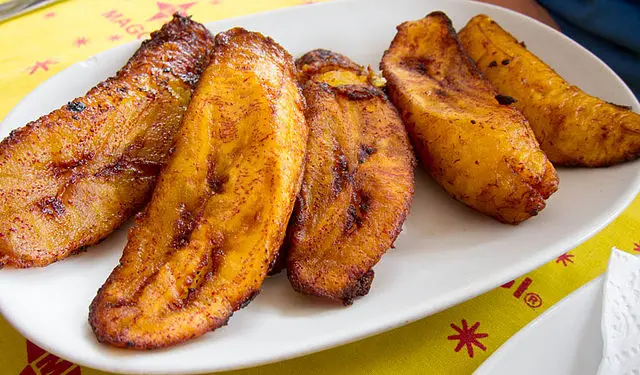
Fried plantain is a fried snack or side-dish, made from sweet plantain fruit, cut into slices and fried in oil. When raw, plantains look a lot like large bananas. Found across West and East Africa, as well as South America, they grow abundantly in Ecuador and are a must-have accompaniment to for so many local dishes.
A backbone of Ecuadorian cuisine, this humble ingredient is used a range of innovative ways throughout the country. Green plantains, called patacones, are twice-fried and sprinkled with salt, whilst yellow plantains (called maduros) are ripe plantains that are sweet and mushy and often seen as a dessert.
Plantain chips or chifle make for a great light snack or side, whilst maduro con queso features a whole plantain that is split open and stuffed with cheese, then barbecued.
Ecuadorian Chocolate
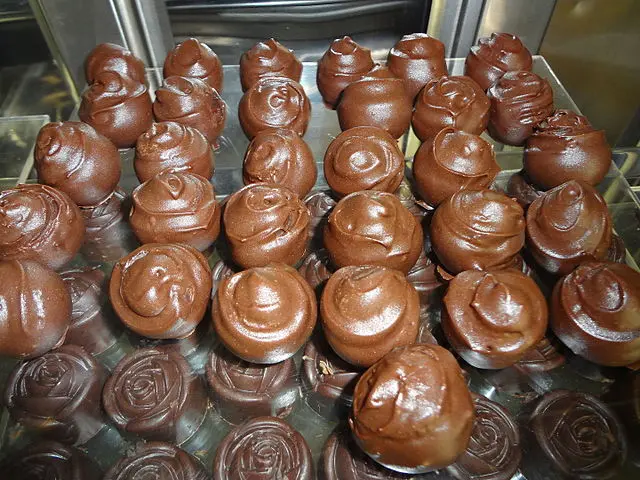
Ecuadorian chocolate is made from a rare type of cocoa bean called Arriba. Widely regarded for producing chocolate of the highest quality, Arriba is not as bitter as other beans and has a fruit-like taste with a hint of spice.
Endemic to Ecuador, Arriba is grown in the low-land provinces, with a history that dates back as far as 5000 years. These days, Ecuadorian chocolate comes in a range of unique flavors, including rose, lemongrass, chile, coffee or even Guayusa – a chocolate bar that mixes cacao with an Amazonian tea.
Cuy
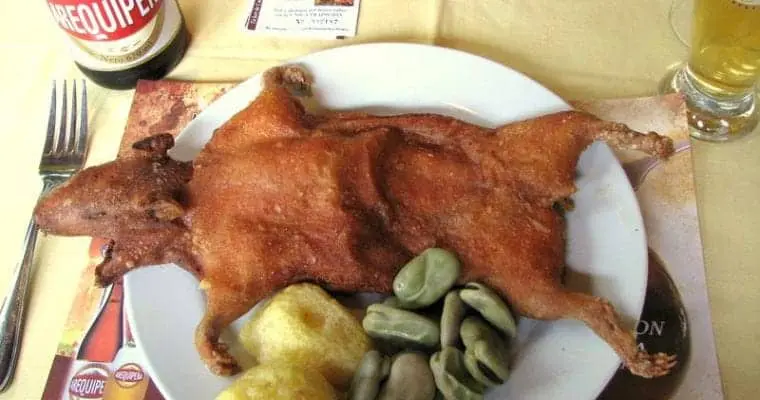
Cuy, or roasted guinea pig, is a traditional dish found in the Andean region of South America, including Ecuador, Bolivia and Peru. Cuy is typically grilled whole on a spit over hot coals and served with potatoes and rice, or fried plantains. It can also be roasted (al horno) and stuffed with herbs and vegetables.
Viche
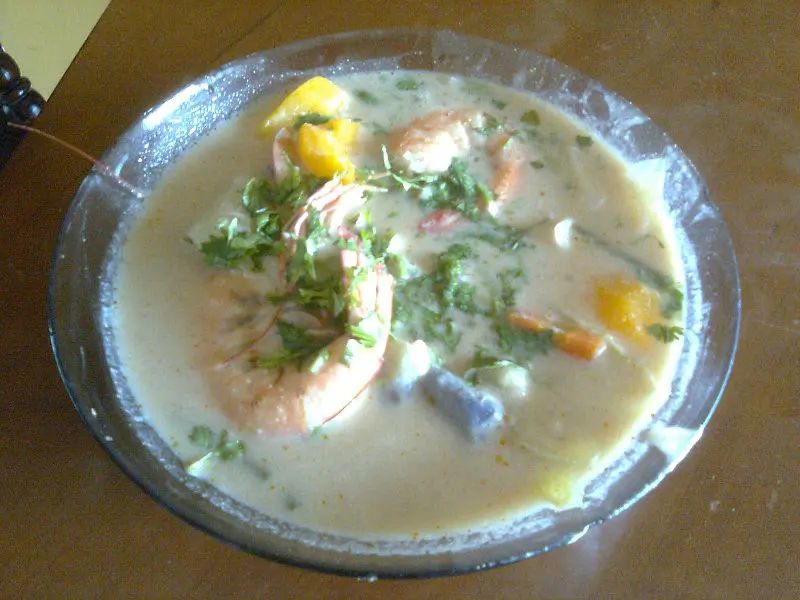
Viche is a traditional fish soup from the Manabi province in the Coastal region of Ecuador. Owing to their similar names, many people confuse ceviche with viche, but they are completely different dishes (despite both consisting of seafood!).
Viche is a hot, thick soup made from either either fish or shrimp. The fish is cooked in a thick broth of water and ground peanuts, along with vegetables like pumpkin, sweet potatoes, corn, yucca, sweet plantain and a surprise treat of green plantain and peanut rolled up into a rich, meatball shape.
Often eaten with a little bit of rice, this Manabi special is staple on family tables and local eateries.
Ceviche
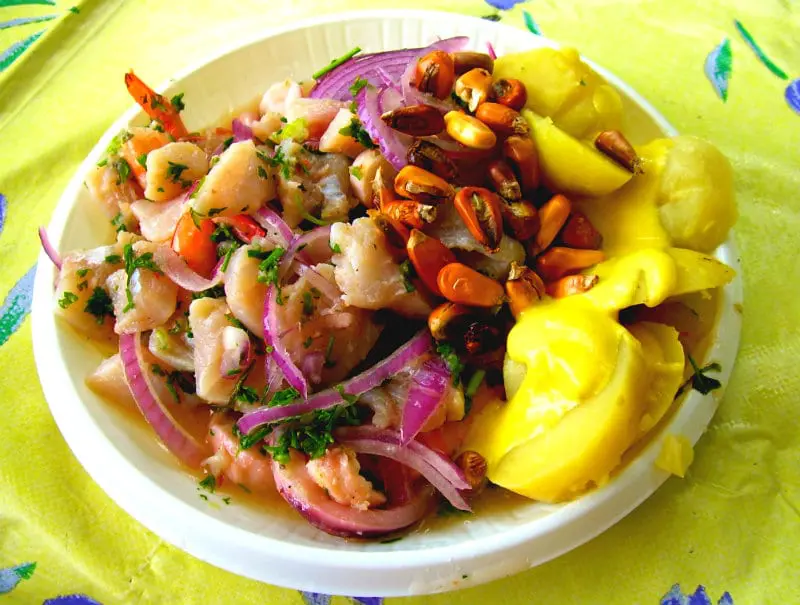
Ceviche is light, tart dish, made from fresh raw fish that is cured in citrus juices. You’ll find ceviche in numerous Latin American countries, and Ecuador, with its long Pacific coastline, is no exception.
When cured, the raw fish becomes firm on the outside, as if cooked, with a tender, translucent center that is bright and refreshing to taste. In its simplest form it is accompanied by chillis and peppers, but a range of ingredients can complement this dish, including onions and tomatoes.
Ecuadorians generally like their ceviche on the sweeter side than their Peruvian neighbors, often mixing orange juice or tomato juice into their marinade and adding sweet peppers, with a side of fried green plantain chips or chifles to scoop up the fish.
Fanesca
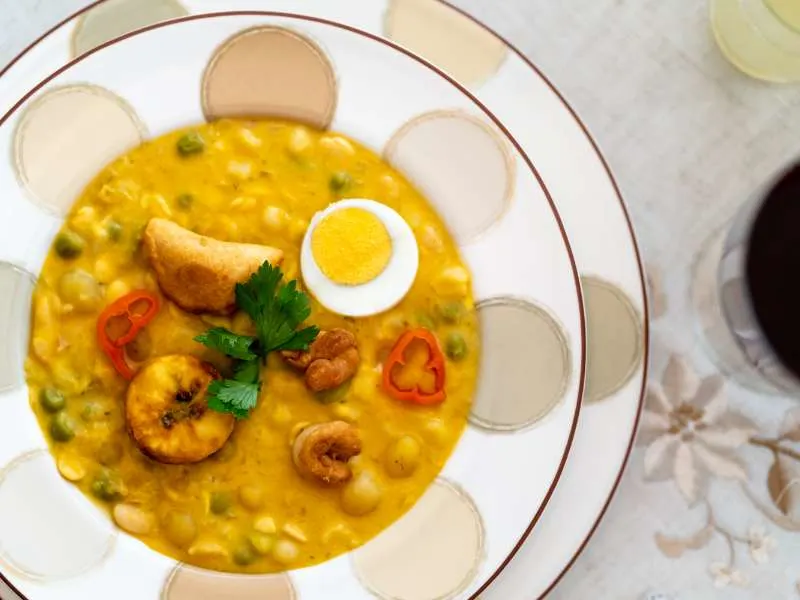
Fanesca, also known as Easter Soup, is a creamy Ecuadorian soup made with salted cod, peanuts, and seasonal vegetables including squash, corn, and an assortment of beans. Featuring twelve different grains or legumes to symbolize Jesus’s twelve apostles, this dish is only prepared during Lent and Easter celebrations and is often eaten as lunch on Good Friday.
Starting with a pureed vegetable base, the soup is topped with sautéed salt cod and other flavourful toppings in a variety of textures.
Llapingachos
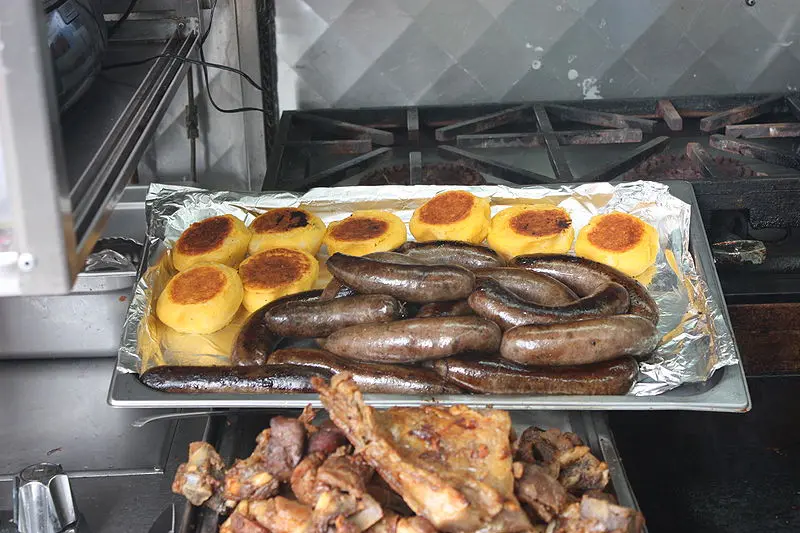
Llapingachos are potato patties or pancakes made from mashed potatoes and stuffed with cheese. Cooked on a hot griddle until crispy, they and are typically served with a creamy peanut sauce called salsa de mani.
Llapingachos are also served as part of a brunch or breakfast dish, along with fried eggs, chorizo and avocado. They are also sometimes served as an appetizer with hot pepper sauce and a sliced onion salad, such as salsa criolla.
Espumilla

Espumilla is a meringue dessert, consisting of egg whites, sugar and fruit pulp. Meaning “little foam” in Spanish, there are two types of espumilla: the Guatamalan version which bakes the egg whites to a hard, meringue texture and the Ecuadorian version which whips the egg whites into a foam, which is then served in an ice-cream cone and eaten raw.
Topped with a range of fruits, syrups and sprinkles, the most popular flavors are guava and blackberry.
Zarapatoca
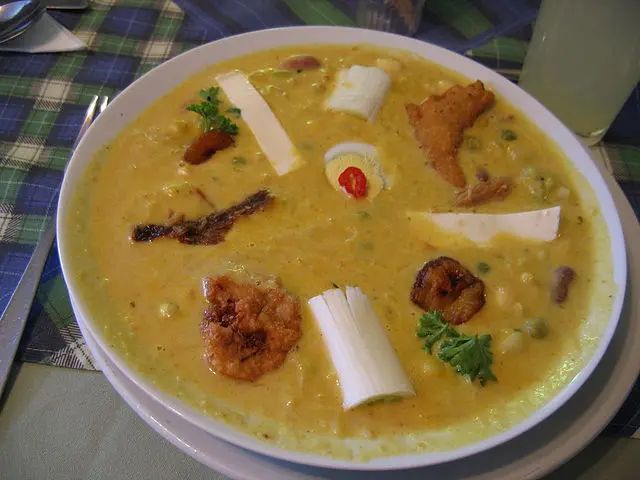
Zarapatoca is a stew prepared in the Amazon region of the country. Like many dishes from the Amazon, the stew is made using locally sourced ingredients, including turtle meat, bananas and the chonta worm.
Hornado
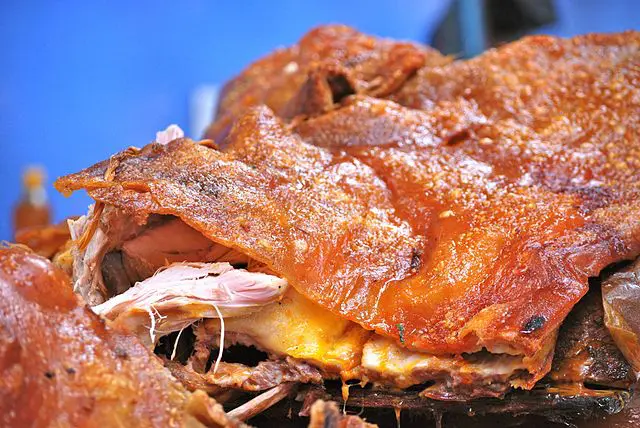
Hornado is a slow roasted pork dish found in market stalls throughout the country. An entire pig is marinated overnight and roasted in a wood-burning oven until the meat is tender and the skin is crispy. Seasoning and extras varies between region, but the meat typically served with llapingachos, fried plantain or mote – a traditional Andean recipe that can be traced back to pre-Hispanic cuisine.
Crunchy skin or crackling is key to a successful hornado, so much so that the skin goes by different names – cuero, cuerito, cascaritas – depending on the region and is often served as a dish in its own right.
Rompope
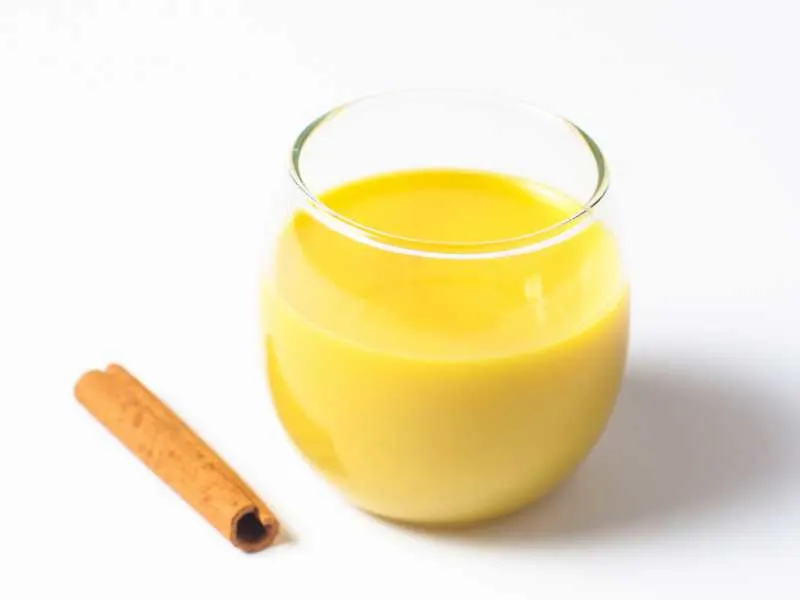
Rompope, also known as Mexican eggnog, is a dairy-based alcoholic drink made using milk, sugar, spices, egg yolks, vanilla and rum. The milk and sugar are heated up and infused with cinnamon.
Most commonly associated with Mexico, where the recipe was believed to have been invented by nuns, rompope has become a popular holiday drink throughout Central and South America.
Fritada de chancho
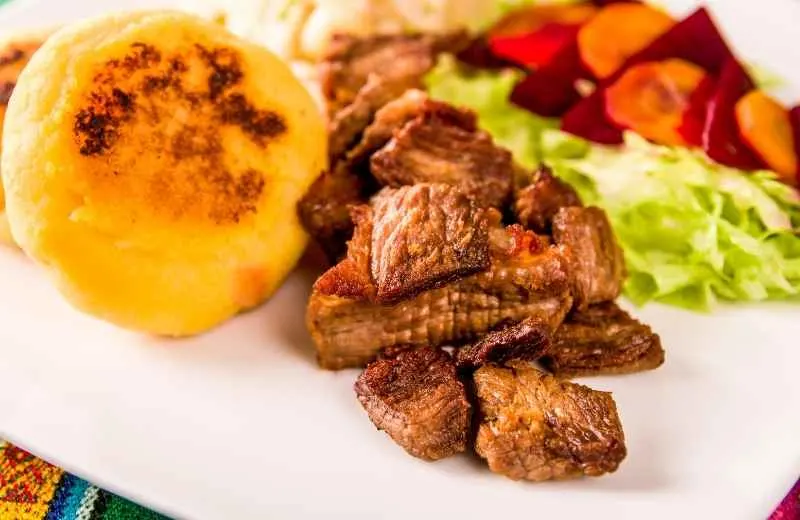
Fritada de chancho is a braised pork dish found in street food vendors across the country. Although the name of the recipe literally translates as ‘fried pork’, the meat is actually braised in a mixture of water and orange juice with onion, garlic and cumin until the liquid is reduced and the meat has browned.
Bolon de Verde
Bolon de Verde is a type of fritter or croquette made by mashed green plantains mixed with cilantro, chorizo, cheese or ground peanuts. The doughy mixture is then shaped into a ball and fried until crispy. It’s a great example of how Ecuadorians use plantain in a versatile way and is a breakfast staple throughout the country, typically served with fried eggs and avocado.
Encebollado
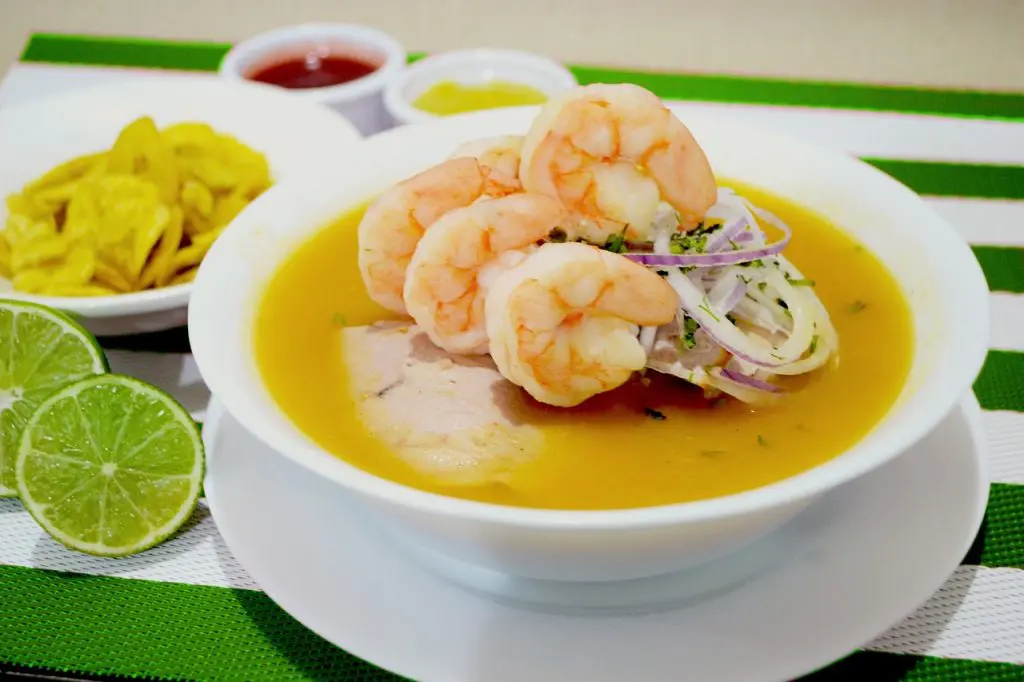
Encebollado is a fish stew made with yucca and tuna fish and cooked in a wholesome broth filled with cilantro, tomatoes and mellow spices. Widely regarded as the national dish, encebollado is beloved in Ecuador as a hangover cure, and is one of those dishes that only grandma cooks best.
If you’re eating encebollado by the coast, you’ll find it served with plantain chips that you’re supposed to crush and mix with the dish, whilst locals from Guayaquil eat their encebollado with rice and large pieces of toasted corn. It’s a dish where everyone gets to add their own touch, and most Ecuadorian families will have their own recipe that they swear by.
Churrasco
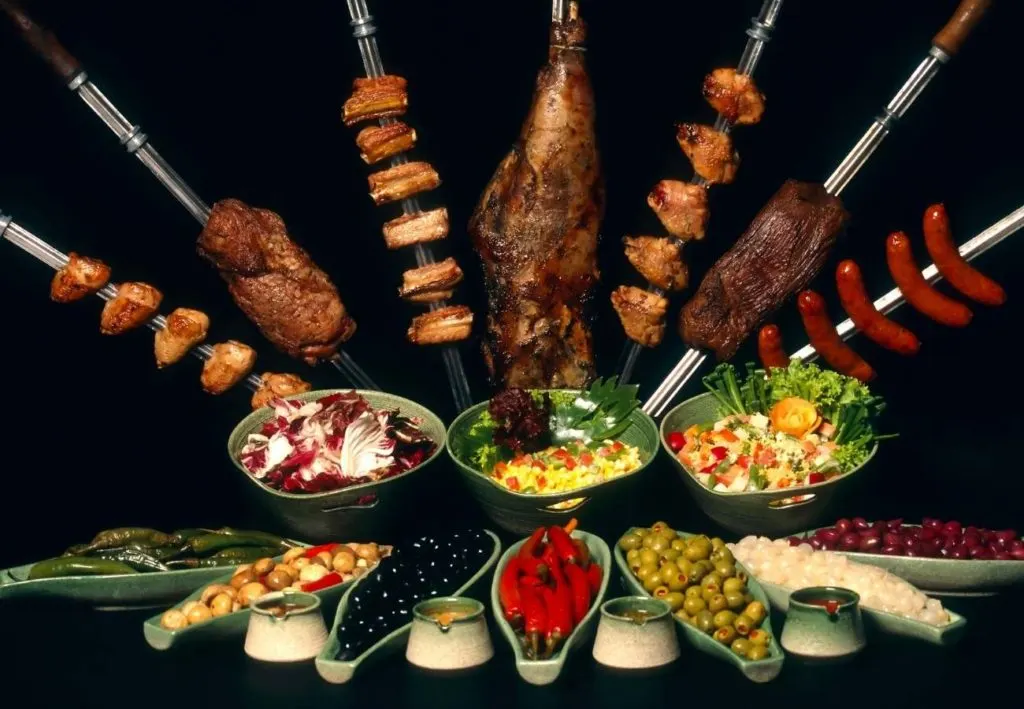
Churrasco is a traditional South American barbecue technique where chops of beef, veal, lamb, pork and chicken are skewered and then grilled over a wood fire. It is a very popular dish in Brazil but is also a widely followed cooking method in many other countries in North and South America.
Unlike its Brazilian counterpart, Ecuadorian churrasco refers to the entire plate of food and consists mainly of steak and eggs (a thin cut of beef which is grilled and topped with a fried egg) along with onions and peppers and sides of rice, plantain, salad and hot sauce.
Guarapo (Sugarcane Juice)
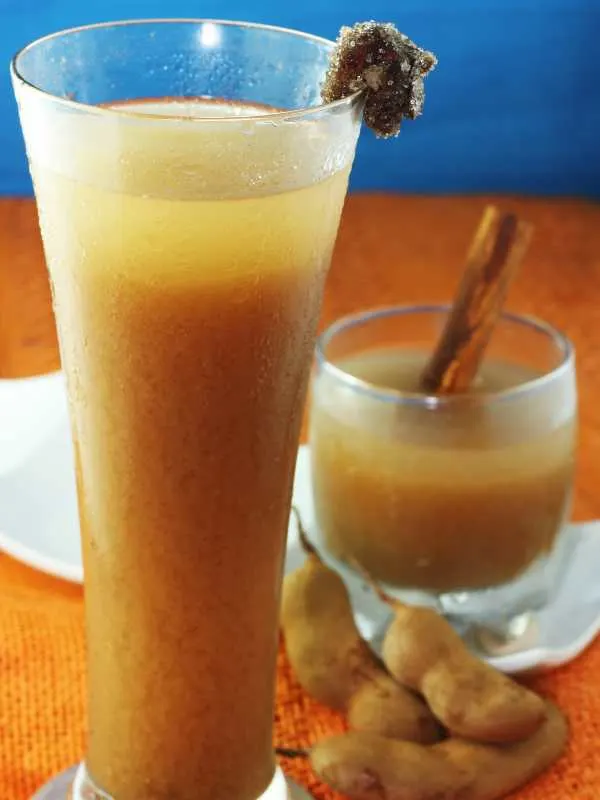
Guarapo is a fermented alcoholic drink made from sugarcane. Introduced by the Spanish at the end of the 19th century, this sweet drink is enjoyed throughout Latin America, and is typically served with lime for freshness.
Pan de Yuca
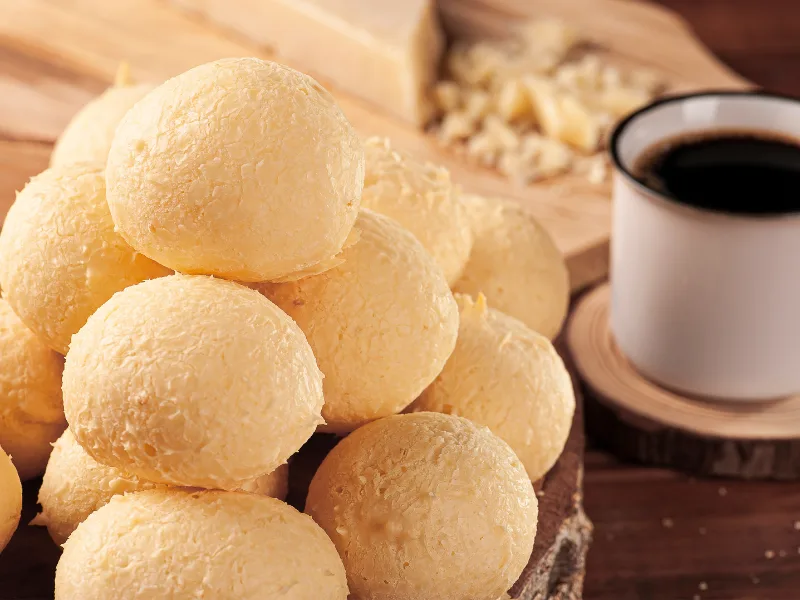
Pan de Yuca is a bread with a chewy texture and a cheesy flavor, made with cassava flour, shaped into small round dough balls. It is a versatile snack that can be enjoyed throughout the day; popular in Ecuador as a breakfast food, afternoon snack or side dish for larger meals.
Arroz Con Pollo
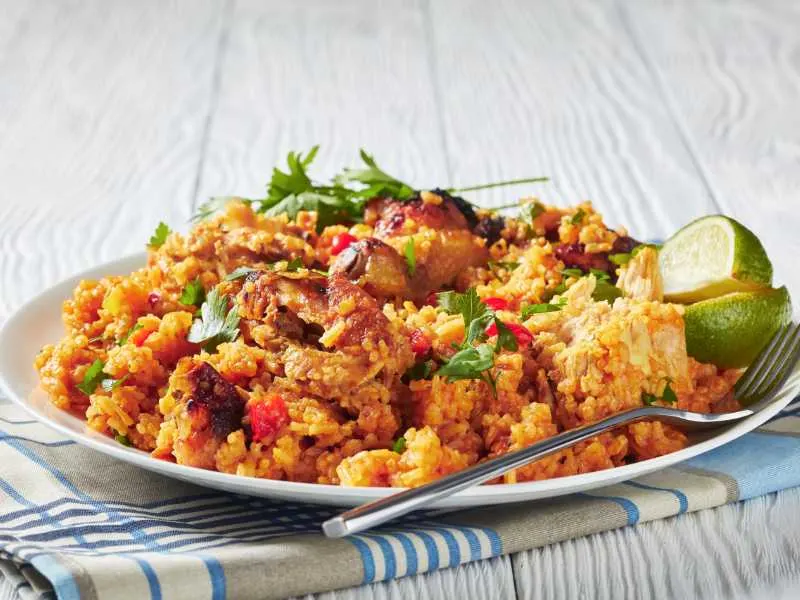
Arroz con pollo is a popular, traditional Latin American dish that combines chicken and rice with onions, bell peppers, garlic, and various seasonings such as cumin, paprika, and oregano. The chicken is simmered in a broth or tomato-based sauce until it becomes tender and infused with the rich flavors of the spices.
The rice is cooked separately and then combined with the chicken and its sauce. This allows the rice to absorb the delicious flavors from the chicken and the aromatic seasonings.

